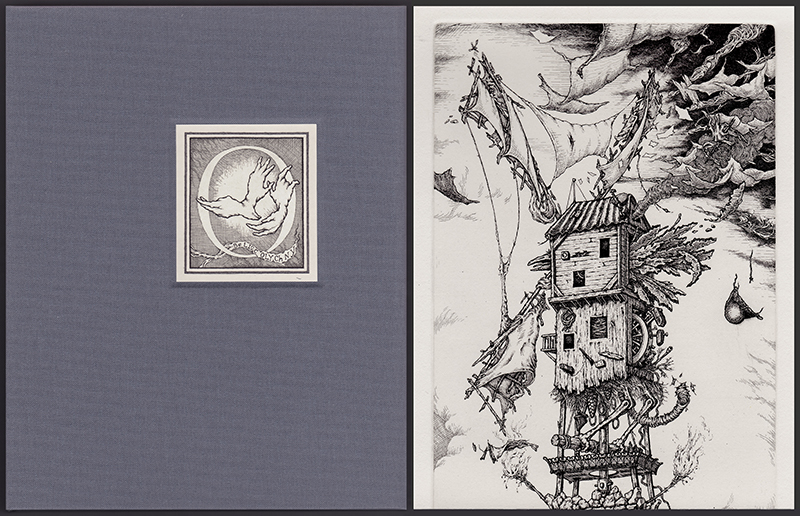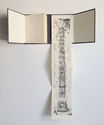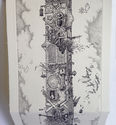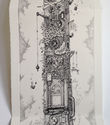
19th, 20th & 21st Century Fine Prints
707-546-7352 · fax 707-546-7924 · web: www.annexgalleries.com · email: artannex@aol.com
Obeliscolychny by David Avery






Obeliscolychny
David Avery
Obeliscolychny
David Avery
1952 - PRESENT (biography)David Avery wrote about this work:
“Obeliscolychny?” you may be tempted to ask.
And with good reason. Arguably one of the most obscure and rarely used terms to be found in literature (or anywhere else), but with, perhaps, undue influence relative to its obscurity, obeliscolychny was invented/appropriated by Francois Rabelais (@1483-1553) and used in books IV and V of his sprawling tales of Gargantua and Pantagruel. Possibly derived from Aristotle’s Politics, which used it to describe a kind of spit used by soldiers to hang lamps on as a metaphor for…well, something or other, it acquired a meaning somewhere along the way of a lighthouse in the form of an obelisk.
Centuries later, Alfred Jarry (1873-1907), poet, playwright, critic, puppeteer, and subverter of objective reality, discovered the word while reading Rabelais and became enamored with it, using it (pataphysically, of course) in several of his novels. That these works tend to be as convoluted and recondite as the origins of obeliscolychny itself was part of what provided grist for the mill of this project.
In picking the texts for this project, I tried to include every literary reference that either included or alluded to this recondite word, making for a very thin book (six in all). Of course, in subsequent years, I discovered two more—George Perec’s parody in Life A User’s Manual, and another in Jarry’s Caesar-Antichrist. Perhaps there are more…




